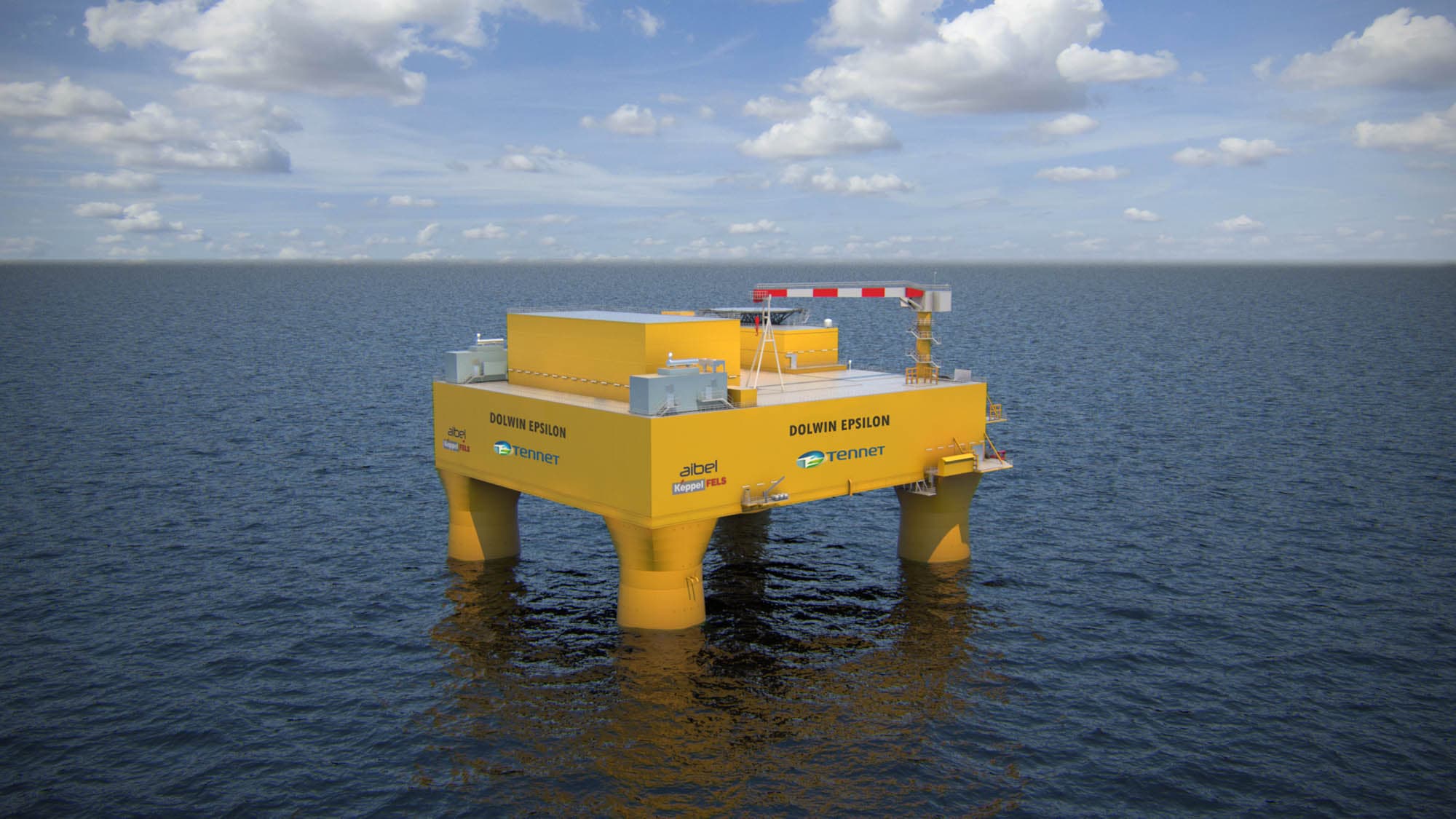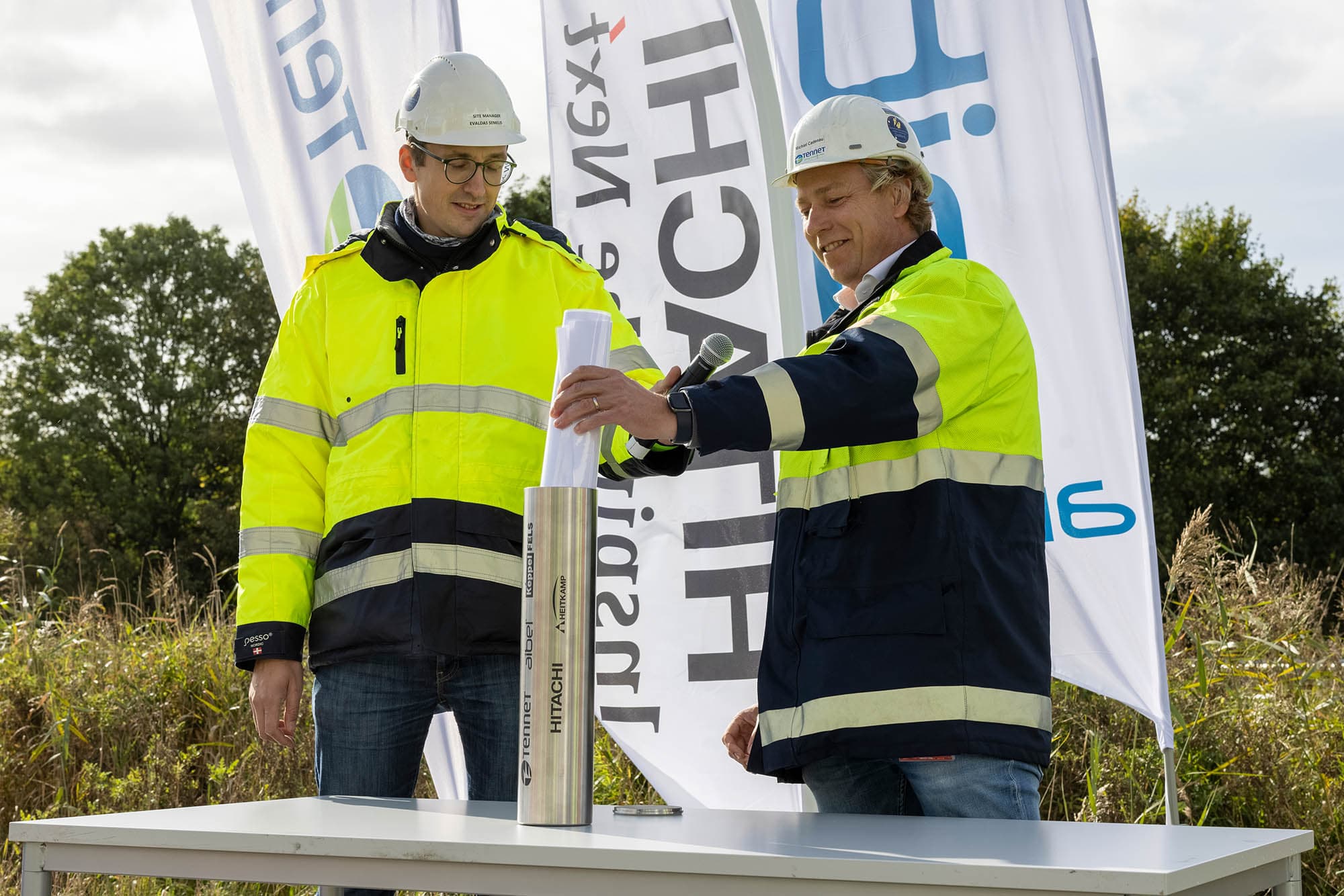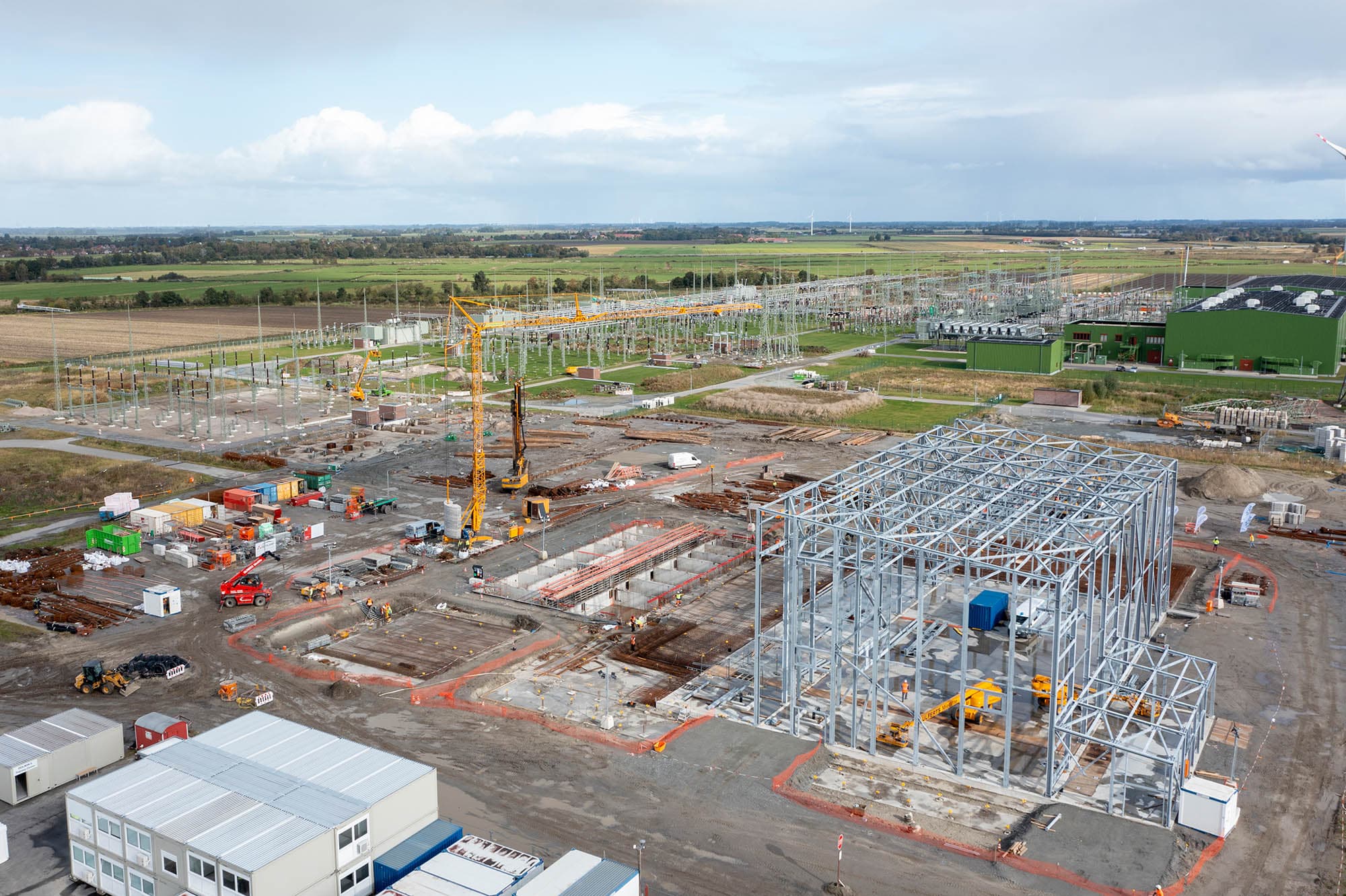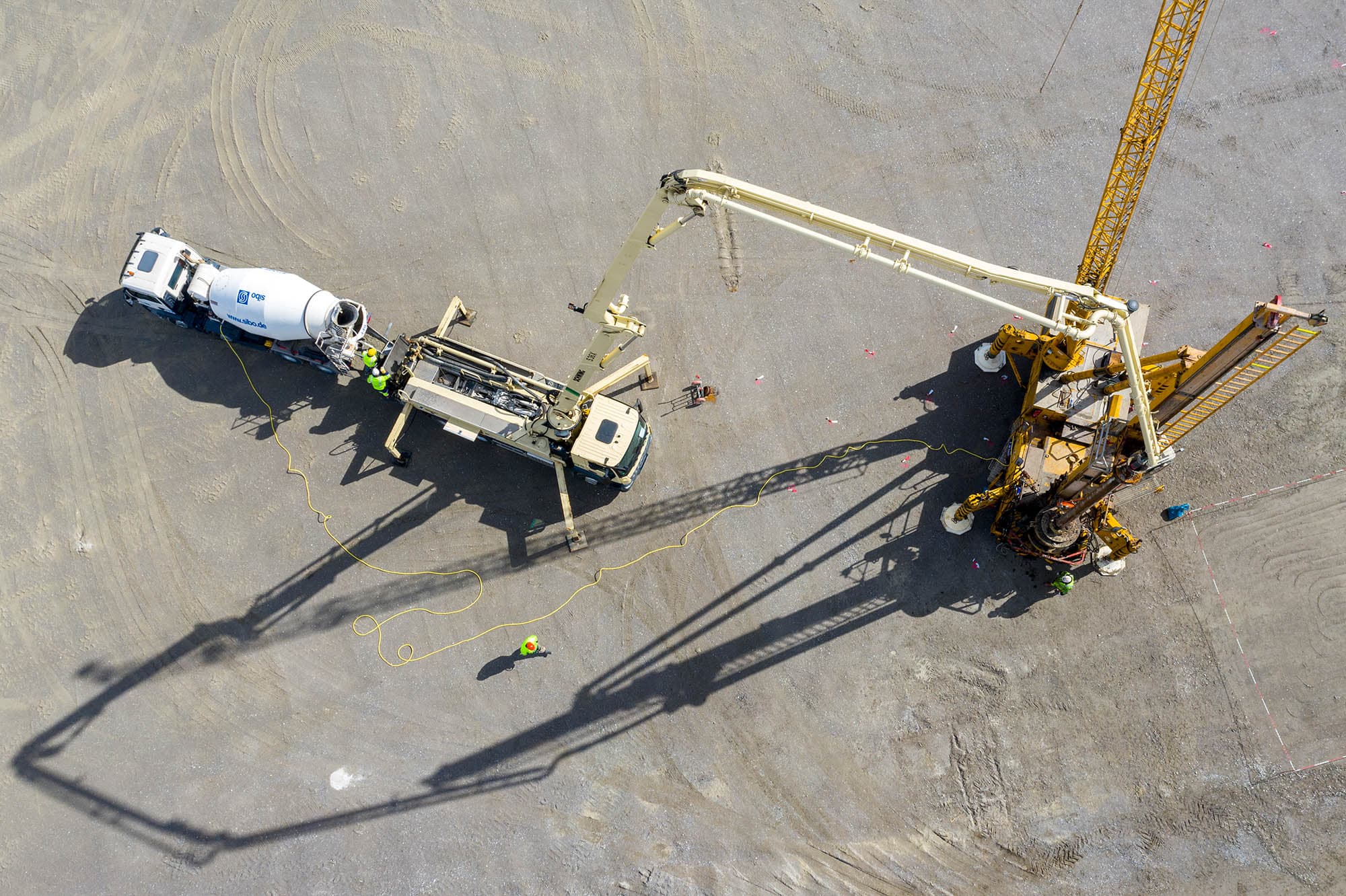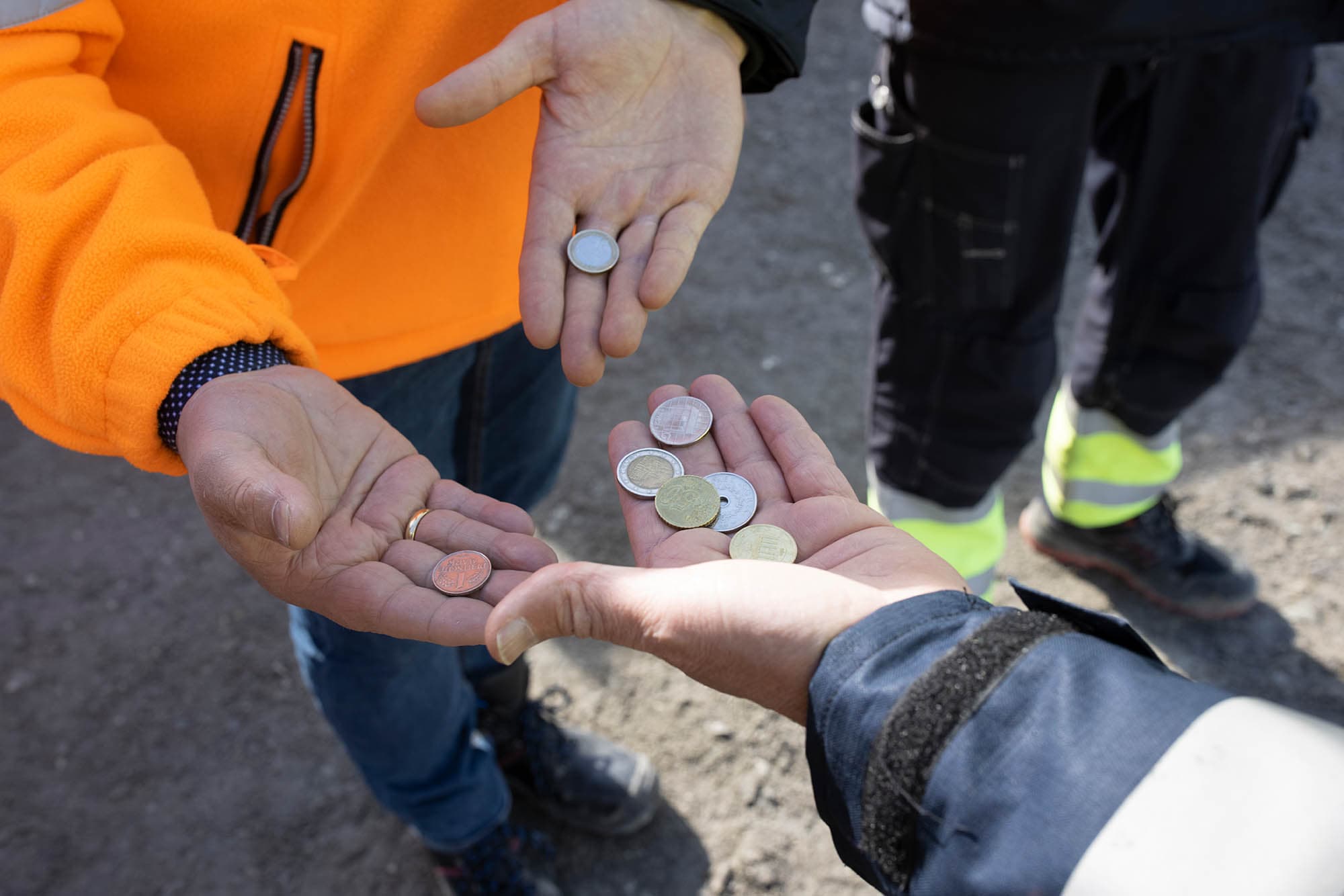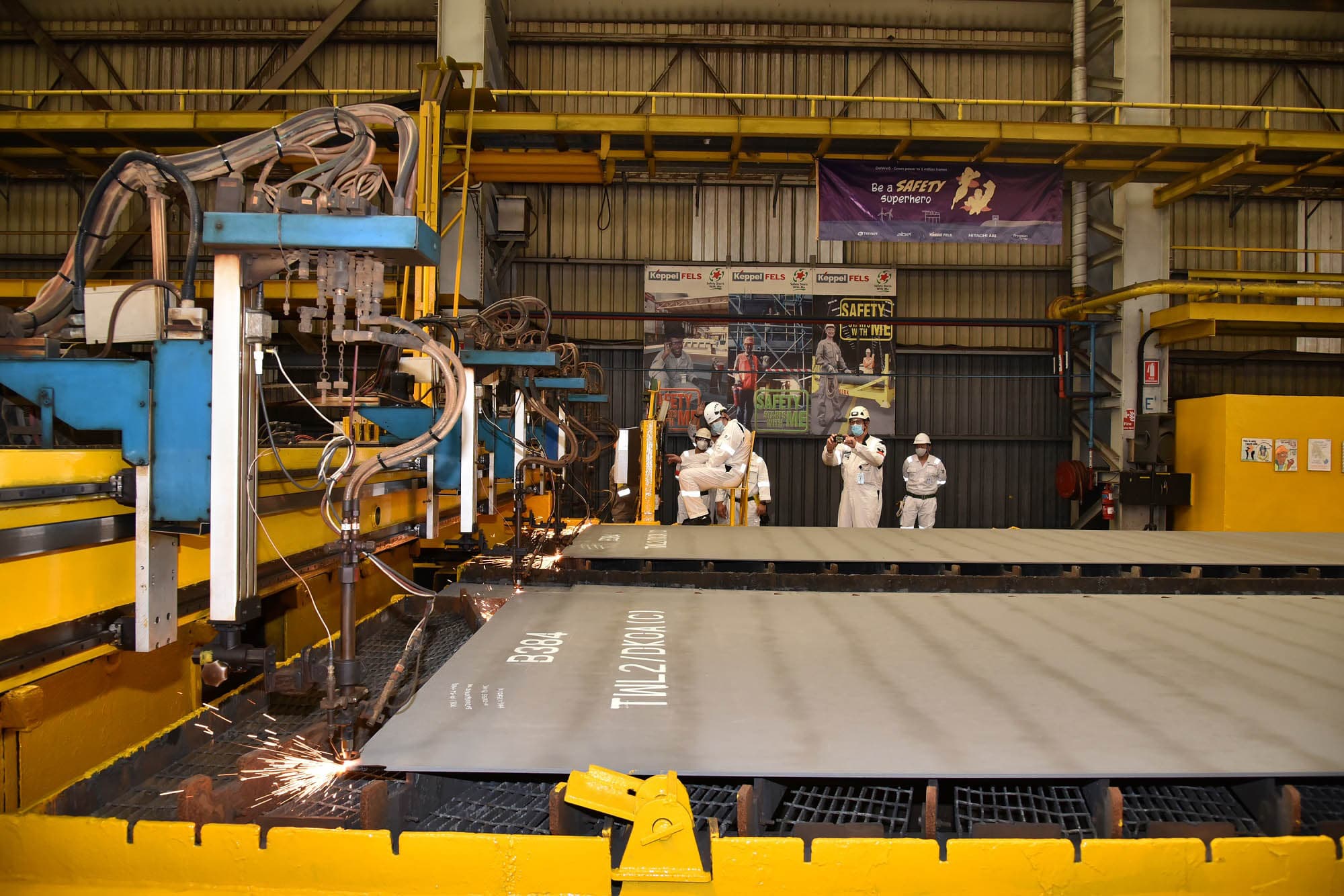DolWin5
In the DolWin5 project, TenneT is installing an offshore grid connection system in the North Sea with a capacity of 900 MW using extra-high voltage direct current transmission technology.
In the DolWin5 project, TenneT is installing an offshore grid connection system in the North Sea with a capacity of 900 MW using extra-high voltage direct current transmission technology.
- DolWin5
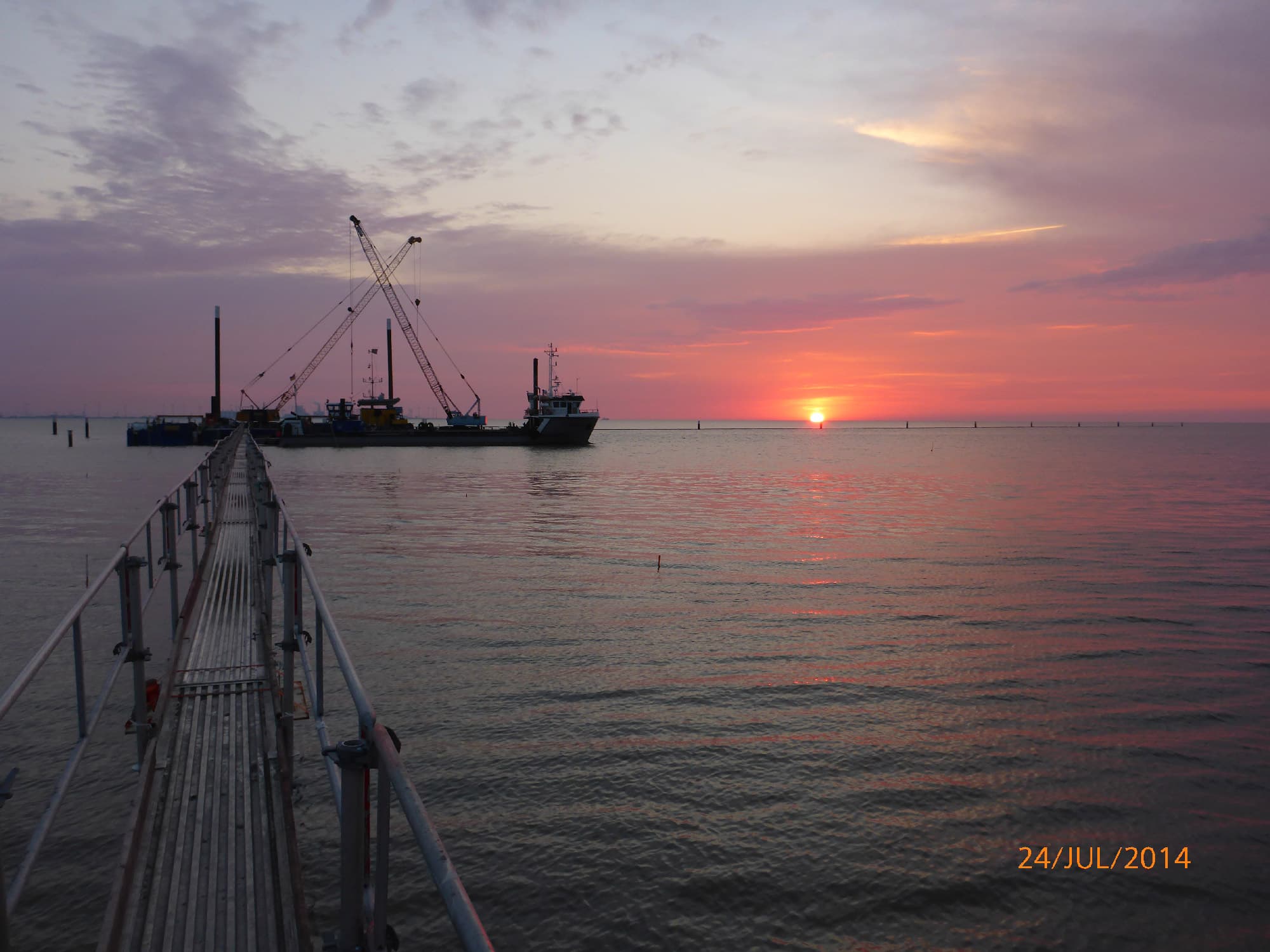
About the project
130 kilometre long and 900 megawatt strong direct current connection

The three-phase alternating current generated by the wind farms at sea is converted into direct current on the offshore platform DolWin epsilon and transported south to Hamswehrum near the river Ems in East Frisia via a 100-kilometre-long submarine cable. From there, a 30 kilometre long land cable leads to the converter station in Emden/East. Here, the direct current is converted back into three-phase alternating current and fed into the extra-high voltage grid on land.
Connecting concept
DolWin5 is one of the offshore grid connection systems, which TenneT connects directly to the corresponding wind turbines via 66 kilovolts three-phase alternating current (AC) cables. Hence, a transformer station that was previously necessary in each wind farm is no longer needed. Furthermore, 155 kV AC cables are no longer required to connect TenneT's offshore platform to that of the wind farm. This means that the electricity generated at sea is directly fed into the TenneT converter platform. The conversion of AC into direct current (DC) takes place at the converter station. The electricity is transported by submarine cable to shore and then by underground cable to the onshore converter station, where it is converted back into AC and fed into the extra-high voltage grid. Economically speaking, this innovative technology leads to enormous cost savings.

Impressions
Contacts

